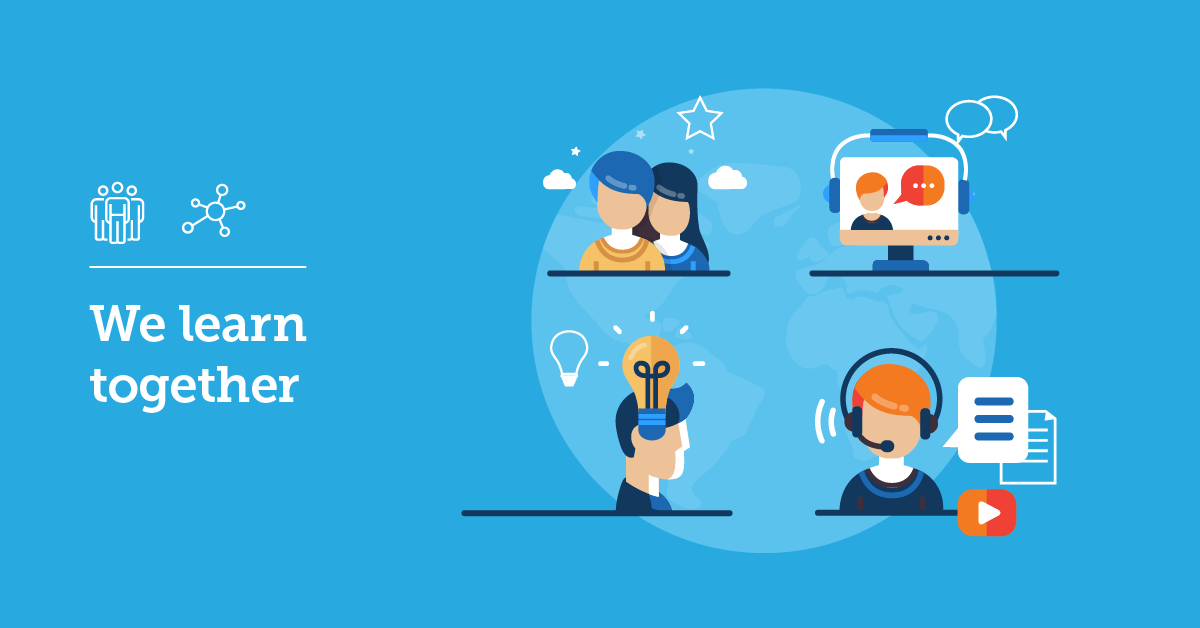Many employees learn at work through informal means, which is frequently sparked by encounters and talks with coworkers. In fact, studies have shown that this kind of social learning accounts for 75% of informal learning that takes place at work.
When workers seek advice from or connect with peers, acquaintances, and professionals in person or online to learn new things, social learning takes place. Peers also naturally hold one another accountable. Social learning is an important part of encouraging individuals to learn and a powerful tool for changing behavior.
Table of Contents
Why Does Social Learning Matter?

Social learning also has a more subdued but significant impact. According to social cognitive theory, people are influenced by their social environment and the behaviors of those around them rather than learning or changing their behavior independently. Individuals can alter their conduct by watching and imitating their peers. Employees may decide to imitate the desired behavior, especially if rewards are offered. While lowering training expenses, social learning increases learning retention.
Additionally, there is a very real link between social learning and employee engagement. Initiatives for learning and development (L&D) are already a major factor in employee engagement, but the ongoing and continuous nature of social learning increases the chances of participation and gain for staff members.
How can you foster a culture that encourages social learning? We have four suggestions.
Four methods for utilizing social learning
1. Begin cohort-based training
Cohort-based training is a type of social learning that enables cohorts to hold one another responsible and serve as role models as they put what they have learned into practice. A new manager cohort can also routinely communicate online after training via an internal social network or monthly lunch meetings to support one another in putting what they learned to use in the workplace.
2. Prompt employees to help and aid each other
Instead of calling each other out, peers can respectfully call each other in both public and private settings. Employees can practice calling each other during realistic scenarios during role-playing sessions, which is one approach to promote this kind of behavior. Employees can remember to modify undesirable behavior, such as bias in the workplace or interrupting coworkers in meetings, by repeatedly learning how to listen to peers.
This public behavior can be an opportunity for learning as long as employees speak up in a courteous manner that assumes good intent.
3. Provide learning resources and opportunities online
Forums established prior to, during, and following the training help to maintain momentum and keep the discussion on issues like unconscious bias going. Employees can engage in debate and social learning when they share their viewpoints or recent experiences with their colleagues. Employees can work and learn aloud on internal social media platforms allowing teams to interact and cooperate. Another method for social learning is word-of-mouth when people discuss new information they’ve acquired or fascinating articles written by peers.
To record transferable information, you can also use an internal best practices blog or wiki. Sections can be updated by staff, giving you a central location to keep information.
4. Partner up for accountability
Partners might be appointed during or after training to encourage employees to put what they learned to use and alter their behavior. Partners can agree to perform a certain action or step and set a strategy for checking in with each other to see how they’re doing. Additionally, this teaming structure can aid staff in mutual observation and modeling.
Be on the lookout for strategies to promote group engagement, reminders/nudges, discussion, and accountability in order to establish a productive social learning environment. Use social learning to its full potential and watch how it affects your staff’s ability to learn and retain new habits.
5. Utilizes Social Media to the Fullest to Promote Meaningful Exchange
Social media and social learning are not the same things. However, websites like Facebook and YouTube can be effective teaching tools. Consider the fact that staff members already utilize these platforms on a regular basis to keep up with friends and read the news. Why not make use of it in your online training? Post daily questions or prompts to start a discussion. To encourage open discussion among employees, it is ideal to establish a closed group. To ensure that everyone respects the thoughts and perspectives of others, you also need to establish certain ground rules. It should never be a setting where participants in employee training “gang up” on someone just because they have different opinions or origins.
Conclusion
The most straightforward definition of social learning is that it is a learner-centered, dynamic approach. Fresh gaps necessitate new task demonstrations, real-world examples, and online conversations. To identify areas for development and come up with new ideas for continuous support, collect participant feedback from employee training programs. You ought to take into account an LMS that facilitates the integration of social learning. Such as groups, live conversations, and leaderboards. Social learning shouldn’t ever be hindered by technology. Therefore, you might need to spend money on a new platform that makes communication easier and enables students to add their own resources.






